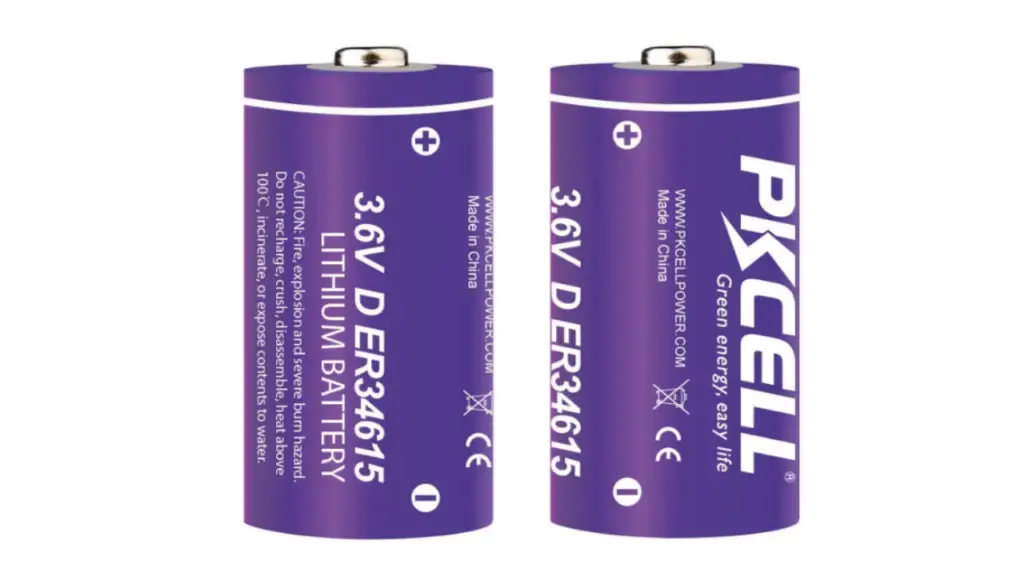Wondering how to charge a battery with a battery charger? Don’t worry, we’ve got you covered! Charging a battery may seem like a daunting task, but with the right knowledge and a few simple steps, you’ll be able to keep your devices powered up and ready to go. In this blog article, we’ll walk you through the process of charging a battery using a battery charger. Whether you’re a beginner or just need a refresher, this guide will provide you with all the information you need to ensure a successful charging experience. So, let’s dive in and learn how to charge a battery with a battery charger effectively.

How to Charge a Battery with a Battery Charger
Introduction
When it comes to keeping our devices powered and ready for use, batteries play a crucial role. Whether it’s your smartphone, laptop, or even your car, having a reliable battery charger can ensure that you never run out of power when you need it the most. In this article, we will explore the ins and outs of charging a battery with a battery charger. From understanding the different types of battery chargers to learning the step-by-step process of charging, this guide will help you become a pro at keeping your batteries charged and ready to go.
Understanding the Different Types of Battery Chargers
Before we dive into the process of charging a battery, it’s important to familiarize ourselves with the different types of battery chargers available in the market. Knowing the various types will help you choose the right charger for your specific needs. Here are the most common types of battery chargers:
1. Trickle Chargers
Trickle chargers are designed to provide a slow and steady charge to your battery over an extended period of time. They are primarily used for maintaining the charge of batteries that are not frequently used, such as those in motorcycles, ATVs, or boats during the off-season. Trickle chargers are ideal for preventing battery sulfation and maximizing battery life.
2. Float Chargers
Float chargers, also known as maintenance chargers, are similar to trickle chargers in that they provide a constant low charge to the battery. These chargers automatically adjust the charge rate to keep the battery at its optimal level. Float chargers are commonly used for charging batteries in vehicles that are stored for long periods, such as classic cars or RVs.
3. Smart Chargers
Smart chargers, also referred to as intelligent chargers, are the most advanced and versatile type of battery chargers. These chargers use microprocessors to analyze and adjust the charging process based on the battery’s condition. Smart chargers can handle a wide range of battery types and sizes and provide a fast and efficient charge without the risk of overcharging. They are suitable for both occasional and frequent charging needs.
4. Fast Chargers
As the name suggests, fast chargers are designed to provide a quick charge to your batteries. These chargers are typically used for smartphones, tablets, and other portable electronic devices. Fast chargers utilize advanced charging technologies to deliver a high current to the battery, reducing the charging time significantly. However, it’s important to note that fast charging may generate more heat and can impact the overall battery lifespan.
Step-by-Step Guide to Charging a Battery with a Battery Charger
Now that we have a good understanding of the different types of battery chargers available, let’s dive into the step-by-step process of charging a battery with a battery charger. Follow these simple steps to ensure a safe and effective charging experience:
1. Safety Precautions
Before you begin, it’s crucial to take some safety precautions to avoid any accidents or damage. Here are a few essential safety tips:
- Make sure you are in a well-ventilated area to prevent the accumulation of potentially harmful gases.
- Wear protective gloves and safety glasses to protect yourself from any accidental spills or splashes.
- Ensure that both the battery and the charger are turned off before connecting them.
- Read the manufacturer’s instructions and safety guidelines specific to your battery charger.
2. Prepare the Battery Charger
Before connecting the battery, it’s important to prepare your battery charger. Here’s what you need to do:
- Ensure that your battery charger is compatible with the type and size of the battery you are charging.
- Inspect the charger cables and connectors for any signs of damage.
- If your charger has adjustable settings, set them according to the manufacturer’s recommendations for your specific battery.
3. Connect the Battery Charger
Now it’s time to connect the battery charger to the battery. Follow these steps:
- Identify the positive and negative terminals of the battery. The positive terminal is usually marked with a plus (+) sign, while the negative terminal is marked with a minus (-) sign.
- Connect the charger cable’s positive clamp to the positive terminal of the battery.
- Connect the charger cable’s negative clamp to the negative terminal of the battery.
- Ensure that the clamps are securely attached and have a good grip on the terminals.
4. Set the Charging Mode
If your battery charger has different charging modes, select the appropriate mode for your battery. Some common modes include:
- Standard Mode: This mode provides a regular charge rate suitable for most batteries.
- Deep Cycling Mode: Use this mode for batteries that require deep charging cycles.
- Winter Mode: This mode adjusts the charging process for cold temperatures.
5. Start the Charging Process
Once you have made all the necessary connections and settings, it’s time to start the charging process. Follow these steps:
- Turn on the battery charger.
- Monitor the charger to ensure that the charging process has started successfully.
- Keep an eye on the charger’s display or indicator lights to track the progress of the charging process.
- Allow the charger to complete the charging cycle as per the manufacturer’s instructions.
6. Disconnect the Battery Charger
Once the charging cycle is complete, it’s important to disconnect the battery charger properly. Follow these steps:
- Turn off the battery charger.
- Remove the negative clamp from the battery’s negative terminal.
- Remove the positive clamp from the battery’s positive terminal.
7. Safety Tips after Charging
After successfully charging your battery, keep these safety tips in mind:
- Allow the battery to rest for a few minutes before using it or reconnecting it to any devices.
- Store the battery and charger in a safe and dry place, away from direct sunlight or extreme temperatures.
- If you are charging a vehicle battery, ensure that all connections are secure and free from corrosion.
Charging a battery with a battery charger doesn’t have to be a complicated process. By understanding the different types of battery chargers and following a few simple steps, you can keep your batteries charged and ready for use. Remember to always prioritize safety and follow the manufacturer’s instructions for your specific battery charger. With these guidelines, you’ll be able to keep your devices powered up and ready to go whenever you need them.
How to use Car Battery Charger
Frequently Asked Questions
How do I charge a battery with a battery charger?
To charge a battery with a battery charger, follow these steps:
What type of battery charger should I use to charge my battery?
The type of battery charger you should use depends on the type of battery you are charging. Some common types include trickle chargers, float chargers, and smart chargers. Always refer to the manufacturer’s instructions or consult with a professional to ensure you have the appropriate charger for your specific battery.
How long does it take to charge a battery with a battery charger?
The charging time for a battery depends on various factors such as the size and capacity of the battery, the charger’s output, and the charge level of the battery. Generally, it can take a few hours to overnight to fully charge a battery. It is important to refer to the manufacturer’s instructions for specific charging times for your battery and charger combination.
Can I leave the battery connected to the charger after it is fully charged?
Most modern battery chargers have built-in mechanisms to prevent overcharging. Once the battery is fully charged, the charger will either automatically switch to a maintenance or trickle charge mode, or it will stop supplying power altogether. However, it is always a good practice to disconnect the battery from the charger once it is fully charged to prevent any potential issues.
Are there any precautions I should take while charging a battery with a battery charger?
Yes, there are a few precautions to keep in mind when charging a battery with a battery charger:
- Ensure the charger is unplugged before connecting or disconnecting the battery.
- Follow the correct polarity when connecting the charger to the battery terminals (positive to positive, negative to negative).
- Place the charger on a stable and non-flammable surface away from any potential sources of ignition.
- Avoid overcharging the battery by adhering to the recommended charging times and instructions provided by the manufacturer.
Can I use a battery charger to revive a completely dead battery?
In some cases, a battery charger may be able to revive a completely dead battery by applying a slow and controlled charging process. However, it is important to note that not all batteries can be revived, especially if they have been completely discharged for an extended period. It is always recommended to consult with a professional or refer to the battery manufacturer’s guidelines for specific instructions on reviving a dead battery.
Final Thoughts
To charge a battery with a battery charger, ensure you have a compatible charger for your battery type. Connect the charger’s positive and negative clamps to corresponding battery terminals, making sure the connections are secure. Set the charger to the appropriate voltage and charging mode based on the battery’s specifications. Monitor the charging process, checking for any signs of overheating or abnormal behavior. Once the battery is fully charged, safely disconnect the charger. Remember, when it comes to charging batteries, using a battery charger is the most efficient and effective method. Now you know how to charge a battery with a battery charger!


